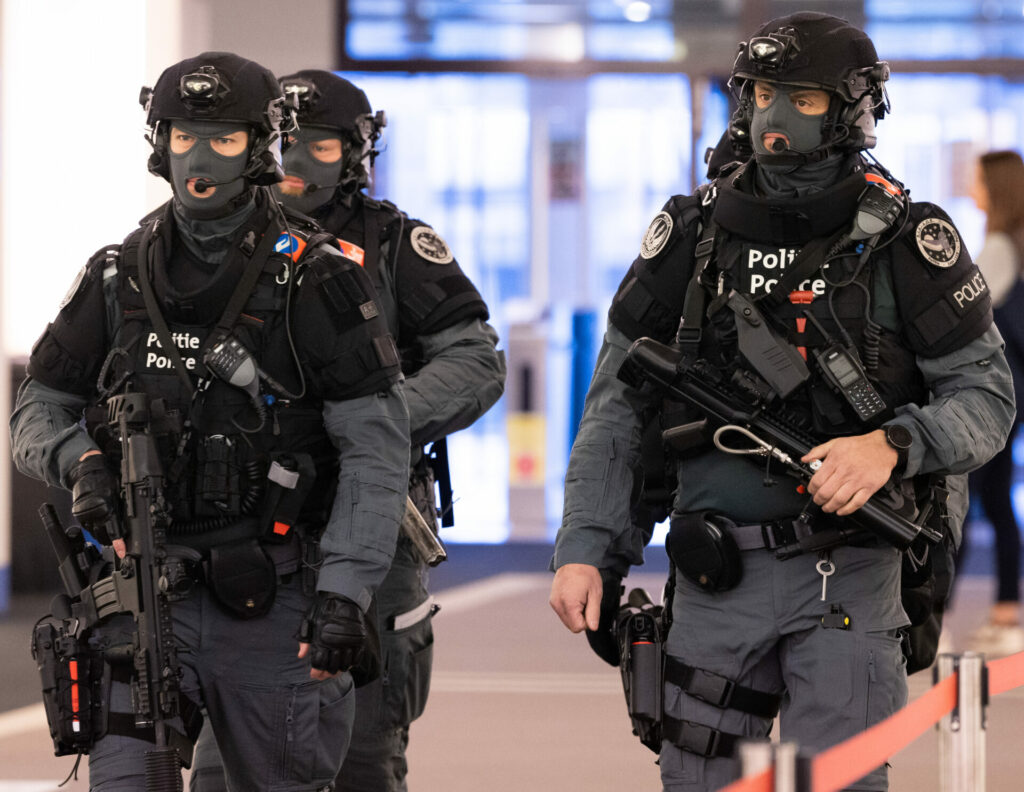The number of names on Belgium's terrorist watch list dropped from 700 to 650 last year, but the average threat level of the people on the list increased slightly, announced the Coordination Body for Threat Assessment (OCAD) during a press conference on Tuesday.
The 'OCAD list' contains the names of extremists and terrorists monitored in Belgium with high priority. In 2023, some 80 names were removed from the list, while about 30 were added.
"A person is removed from the list if they are found to have been evolving positively for a long time, and no new negative elements emerge," said OCAD Director Gert Vercauteren. "This is not done overnight. But if someone reintegrates well, they should be taken off the list. That is democracy."
The drop is mainly due to the easing of the Syria crisis, he said. "This does not mean that the threat also automatically decreases. Our analysis shows that the average threat posed by those on the list has risen slightly."
From Syria to Gaza
The average threat level is calculated based on an individual threat analysis prepared for each person on the list. It is too early to establish a causal link, Vercauteren noted, but the average level might have risen because more people with very low levels disappeared from the list than were added.
Additionally, OCAD counted more files with arrests in 2023 – peaking in the spring, and again in the autumn with the violence in Gaza. In any case, the slight increase was not due to the addition of people subject to the very highest threat level, Vercauteren stressed.
The data further shows that 88% of the individuals on the watch list come from jihadist ideology, 9% are related to right-wing extremism and 2% to left-wing extremism.

Federal Justice Minister Paul Van Tigchelt (Left) and OCAD Director Gert Vercauteren (Right) pictured during a national security press conference in Brussels on Tuesday 26 March 2024. Credit: Belga / James Arthur Gekiere
Most of the names on the list fall into the category of 'foreign terrorist fighters': people who left for conflict zones to join a terrorist group, or had the intention of doing so. Of the 426 people who fall in this category, about one third are abroad.
About 190 of them are believed to have died, Vercauteren said with caution. In practice, this means that the number of names in that category should decrease further in the coming years, as more deceased individuals are removed from the list.
There are also 40 more 'homegrown terrorist fighters' on the list (those who choose to commit terrorist acts in Belgium or support them) and 90 hate propagandists (who justify the use of violence for ideological purposes).
Related News
- Moscow terror attack: ISKP is 'biggest jihadist threat' to Belgium
- Terror threat level remains at 3 in Belgium
- At least 137 dead, 150 wounded after terrorist attack in Moscow concert hall
Finally, there are 110 potentially violent extremists, who have intentions to use violence but have not yet taken concrete steps, and 23 terrorism convicts. "For these categories, we have reached a plateau," Vercauteren said.
He could not disclose how many individuals on the list were inspired by ISKP (Islamic State in the Khorasan Province), the terror group behind last week's attack in Moscow. "But in principle, it does not matter to OCAD whether someone is inspired by ISKP, IS or Al-Qaeda. If they meet the criteria, any extremist can be included."

